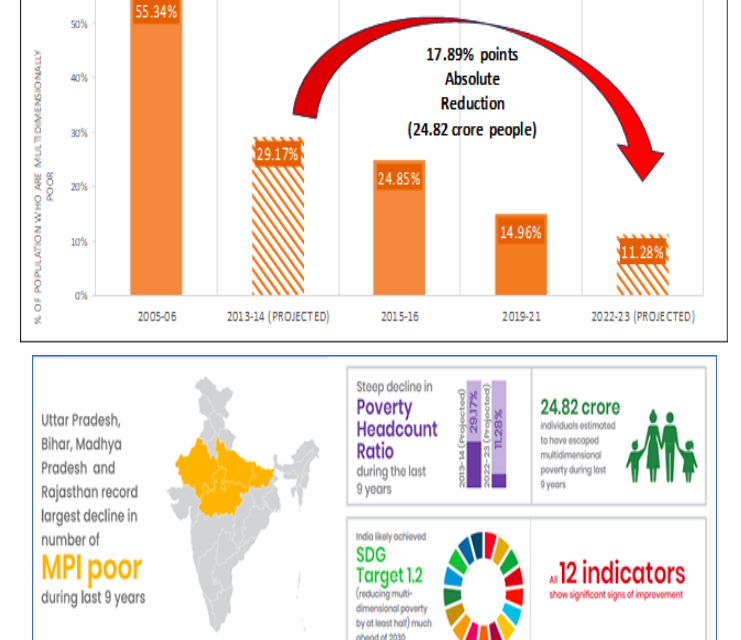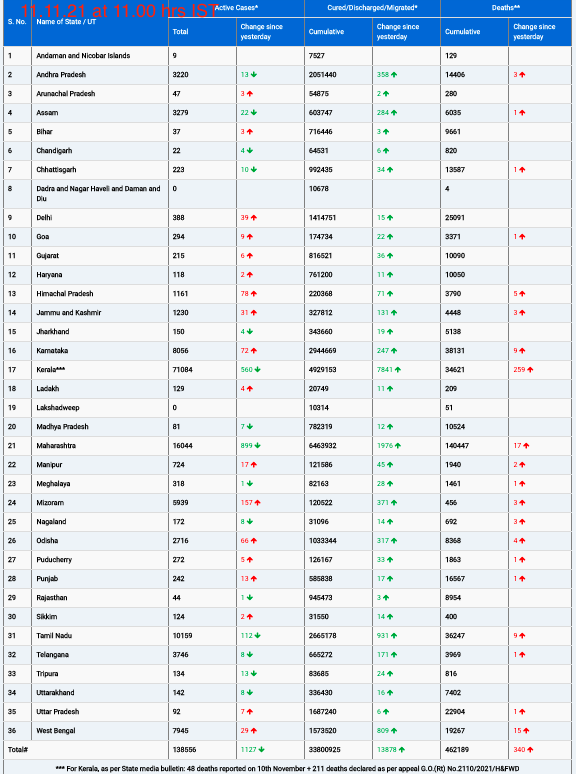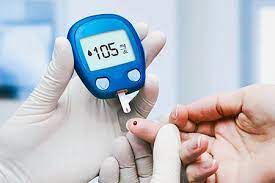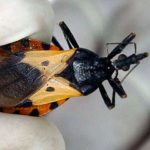
In a groundbreaking revelation, a discussion paper released by NITI Aayog titled ‘Multidimensional Poverty in India since 2005-06’ has showcased a remarkable achievement for the nation. According to the findings, an astounding 24.82 crore individuals have successfully escaped multidimensional poverty in the last nine years. The credit for this significant stride is attributed to the government’s unwavering commitment and substantial initiatives aimed at addressing all dimensions of poverty between 2013-14 to 2022-23.
The discussion paper, unveiled by Prof Ramesh Chand, Member, NITI Aayog, in the presence of Shri B. V. R. Subrahmanyam, CEO NITI Aayog, highlights the technical contributions of Oxford Policy and Human Development Initiative (OPHI) and United Nations Development Programme (UNDP) in crafting this comprehensive analysis.
The Multidimensional Poverty Index (MPI), a globally recognized metric, transcends monetary aspects to provide a holistic measure of poverty. Utilizing the robust Alkire and Foster (AF) method, the MPI identifies poverty across universally acknowledged metrics, offering a nuanced perspective compared to traditional monetary poverty measures.
According to the discussion paper, India has witnessed a substantial decline in multidimensional poverty from 29.17% in 2013-14 to 11.28% in 2022-23, marking a remarkable reduction of 17.89 percentage points. Uttar Pradesh leads the way with the largest decline, as 5.94 crore people escaped multidimensional poverty in the last nine years, followed by Bihar (3.77 crore), Madhya Pradesh (2.30 crore), and Rajasthan (1.87 crore).
The paper also reveals that the exponential decline in poverty headcount ratio was significantly faster between 2015-16 to 2019-21 (10.66% annual rate of decline) compared to the period from 2005-06 to 2015-16 (7.69% annual rate of decline). All 12 indicators of MPI have demonstrated noteworthy improvement throughout the study period.
The achievement signifies that India is on track to achieve its Sustainable Development Goal (SDG) of halving multidimensional poverty well before 2030. The government’s dedication and resolute commitment to uplifting the lives of the most vulnerable have been instrumental in this accomplishment.
Various government initiatives, such as Poshan Abhiyan and Anemia Mukt Bharat, have significantly improved access to healthcare facilities, contributing to a substantial decrease in deprivation. The Targeted Public Distribution System under the National Food Security Act, one of the world’s largest food security programs, covers 81.35 crore beneficiaries, providing food grains to both rural and urban populations.
Recent decisions, including extending free food grain distribution under Pradhan Mantri Garib Kalyan Anna Yojana for another five years, exemplify the government’s ongoing commitment. Flagship programs like Pradhan Mantri Jan Dhan Yojana and PM Awas Yojana have played pivotal roles in financial inclusion and providing safe housing for the underprivileged.
While disparities exist among states, traditionally high-poverty states have made significant progress, reducing inter-state disparities in multidimensional poverty. The improvement in accessing basic services suggests that India is swiftly resolving fundamental problems, paving the way for the nation to achieve its vision of becoming a developed nation, known as ‘Viksit Bharat @2047.’












